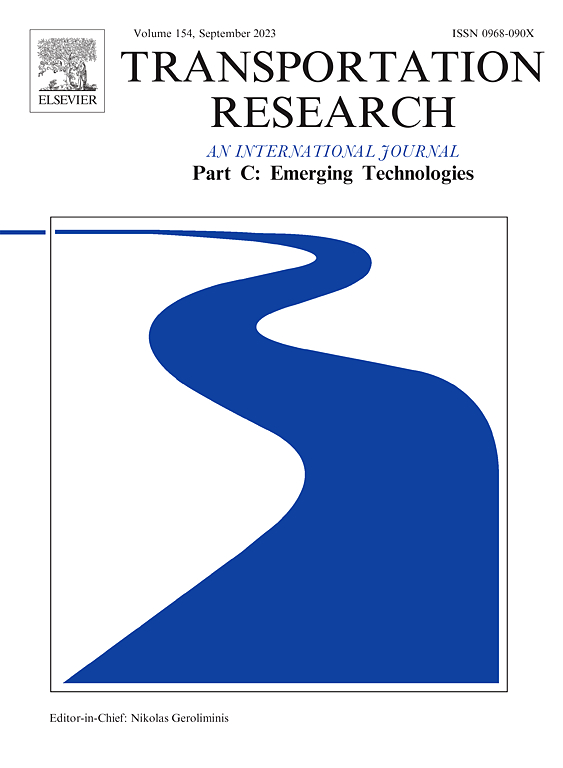Near time-optimal trajectory optimisation for drones in last-mile delivery using spatial reformulation approach
IF 7.6
1区 工程技术
Q1 TRANSPORTATION SCIENCE & TECHNOLOGY
Transportation Research Part C-Emerging Technologies
Pub Date : 2025-02-01
DOI:10.1016/j.trc.2024.104986
引用次数: 0
Abstract
Seeking a computationally efficient and time-optimal trajectory for drones is crucial for saving time and energy costs, especially in the field of drone parcel delivery. Still, last-mile drone delivery is a challenge in urban environments, due to the existence of complex spatial constraints arising from high-rise buildings and the inherent non-linearity of the system dynamics. This paper presents a three-stage method to address the trajectory optimisation problem in a constrained environment. First, the kinematics and dynamics of the quadcopter are reformulated in terms of spatial coordinates, which enables the explicit evaluation of the progress of the path. Second, an efficient flight corridor generation algorithm is presented based on the transverse coordinates of the spatial reformulation. Third, the nonlinear model predictive control (NMPC)-based optimal control problem with obstacle avoidance is formulated for solving the time-optimal trajectory. Compared to the true time-optimal trajectory, the flight time of the near time-optimal trajectory is 3.10% longer than the true time-optimal trajectory, but with a 92.5% reduction in computation time. Numerical simulations based on an illustrative scenario as well as a real-world urban environment are conducted. Results demonstrate the effectiveness of the proposed method in generating near time-optimal trajectory but with a reduced computational burden.
求助全文
约1分钟内获得全文
求助全文
来源期刊
CiteScore
15.80
自引率
12.00%
发文量
332
审稿时长
64 days
期刊介绍:
Transportation Research: Part C (TR_C) is dedicated to showcasing high-quality, scholarly research that delves into the development, applications, and implications of transportation systems and emerging technologies. Our focus lies not solely on individual technologies, but rather on their broader implications for the planning, design, operation, control, maintenance, and rehabilitation of transportation systems, services, and components. In essence, the intellectual core of the journal revolves around the transportation aspect rather than the technology itself. We actively encourage the integration of quantitative methods from diverse fields such as operations research, control systems, complex networks, computer science, and artificial intelligence. Join us in exploring the intersection of transportation systems and emerging technologies to drive innovation and progress in the field.

 求助内容:
求助内容: 应助结果提醒方式:
应助结果提醒方式:


